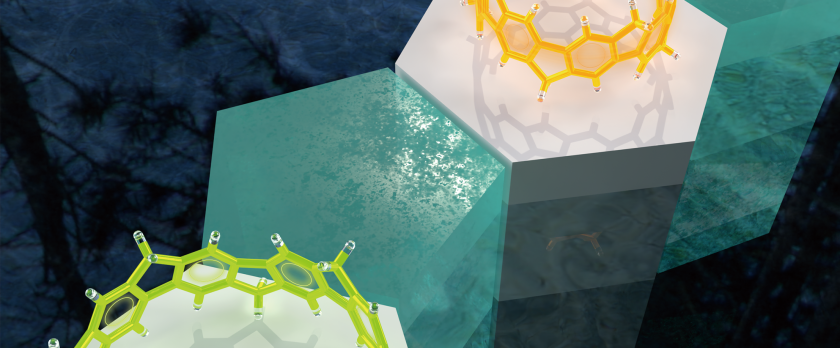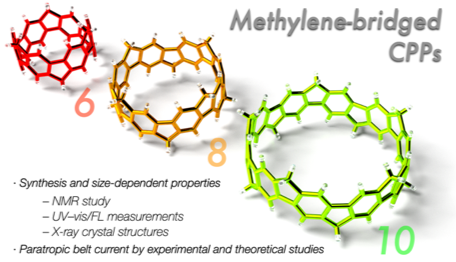


“Methylene-Bridged [6]‐, [8]‐, and [10]Cycloparaphenylenes: Size- Dependent Properties and Paratropic Belt Currents”
Hideya Kono, Yuanming Li, Riccardo Zanasi, Guglielmo Monaco, Francesco F. Summa, Lawrence T. Scott, Akiko Yagi,* and Kenichiro Itami*
J. Am. Chem. Soc. 2023, accepted. DOI: 10.1021/jacs.2c13208
Cycloparaphenylenes (CPPs) and carbon nanobelts (CNBs) represent some of the most iconic cyclic molecular nanocarbons in recent chemistry owing to their unique properties derived from rigid, strained, and cyclic π-conjugated systems. In the last decade, the synthesis of various sizes of CPPs and CNBs has been achieved that allowed not only for investigating their size-dependent properties and strategically using such properties in various applications but also understanding the fundamental features of cyclic π-conjugated systems and molecular nanocarbons in general. Herein, we report on the synthesis, size-dependent properties, and paratropic belt currents of methylene-bridged [n]cycloparaphenylenes ([n]MCPP, n = 6, 8, 10). [8]MCPP and [10]MCPP were synthesized by the same strategy we developed for [6]MCPP synthesis. With readily available ethoxy-substituted pillar[8]arene and pillar[10]arene as precursors, [8]MCPP and [10]MCPP were successfully synthesized in three steps consisting of de-ethylation, triflation, and nickel-mediated aryl–aryl coupling. The structural and electronic properties of MCPPs were investigated by nuclear magnetic resonance analyses, absorption/fluorescence measurements, X-ray crystallographic analyses, and computational studies, revealing their interesting size-dependent properties. The differences in the size dependency between MCPPs and CPPs reflect the belt-form features of MCPPs, namely, methylene-bridging effects on MCPPs. Moreover, an interesting paratropic belt current along the MCPP backbone has been uncovered both experimentally and theoretically. The 1H NMR chemical shifts of MCPPs confirmed the presence of a paratropic belt current, whose strength rapidly decreases with increasing nanobelt size.
